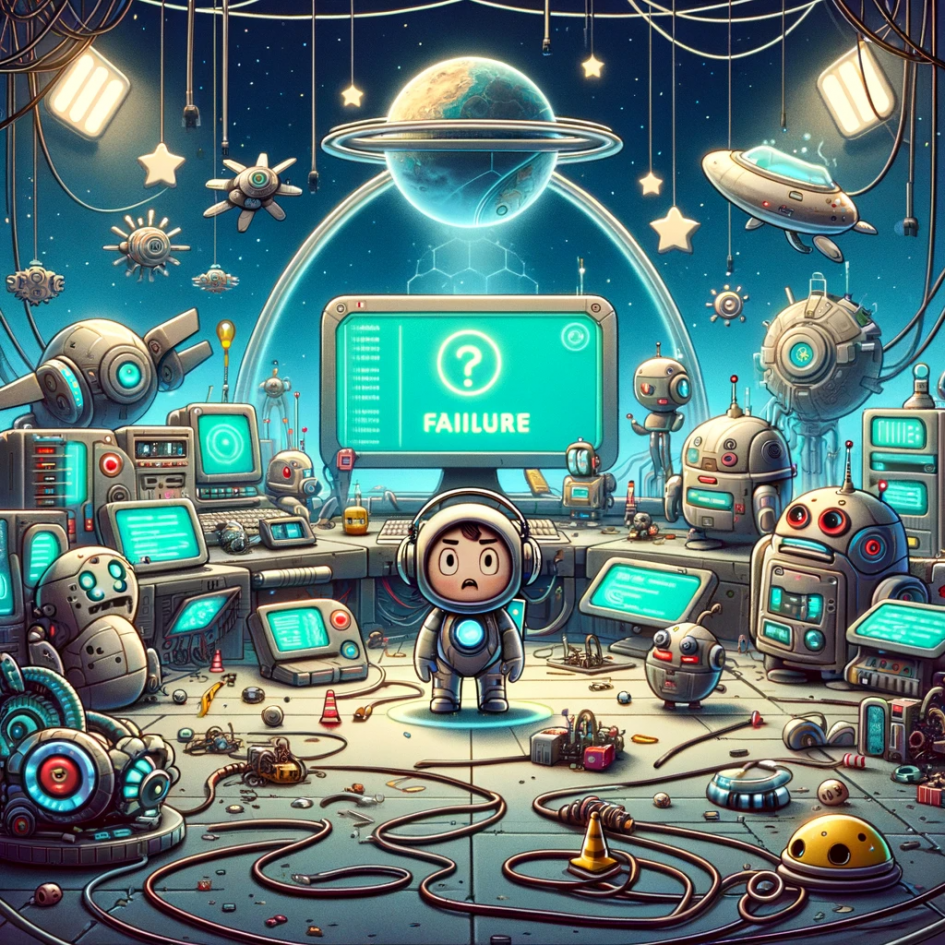In the ever-evolving world of software engineering and digital delivery, the success of a technical project is as elusive as it is desired. Throughout my career in Agile methodologies and software development, I’ve witnessed numerous projects falter, and it’s become clear that failure isn’t just a matter of bad luck or insufficient resources. There are deeper, more systematic reasons at play.
Misalignment of Goals and Vision
One of the most significant reasons for the failure of technical projects is the misalignment between the goals of the project and the vision of the stakeholders. This misalignment often stems from poor communication or a lack of understanding of the project’s objectives. When the development team and stakeholders are not on the same page, it leads to a product that does not meet the expectations or needs of the end-users.
The Agile Disconnect
In Agile environments, this misalignment can be particularly problematic. Agile methodologies thrive on flexibility and adaptability, but this can sometimes lead to a divergence from the original vision. Stakeholders may feel that the evolving product no longer aligns with their expectations, leading to frustration and, ultimately, the project’s demise.
Inadequate Risk Management
Another critical factor in the failure of technical projects is inadequate risk management. Many projects start with a bang but fizzle out as unforeseen challenges arise. Effective risk management involves identifying potential risks early on and developing strategies to mitigate them. Unfortunately, in the race to deliver, risk assessment often takes a backseat, leading to catastrophic consequences down the line.
The Agile Paradox
Agile methods, with their emphasis on rapid delivery and adaptability, can sometimes exacerbate this issue. The iterative approach of Agile is excellent for managing some risks, but it can also lead to a false sense of security. Teams may become so focused on immediate tasks that they lose sight of the bigger picture, allowing significant risks to go unmanaged.
Poor Communication and Collaboration
The importance of clear communication and collaboration in technical projects cannot be overstated. Misunderstandings and miscommunications can derail a project faster than any technical hurdle. In a field where complex ideas and solutions are the norms, the ability to effectively communicate these concepts is crucial.
Agile’s Communication Challenge
While Agile methodologies promote communication and collaboration, they also require a high level of discipline and understanding of Agile principles. Without this, the intended benefits of Agile can quickly turn into liabilities. Daily standups and sprint meetings can become meaningless rituals if team members are not fully engaged or if the communication is not clear and purposeful.
Scope Creep and Feature Bloat
Scope creep and feature bloat are silent killers of technical projects. It’s easy to fall into the trap of continually adding features or expanding the scope of a project, especially in response to stakeholder demands or perceived market needs. However, this often leads to an overcomplicated product that is difficult to complete and even harder to use.
Agile’s Double-Edged Sword
Agile methodologies, with their iterative nature and focus on customer feedback, can inadvertently contribute to scope creep. The desire to continuously improve and adapt the product can lead to an ever-expanding list of features, making it difficult to maintain focus on the core functionality.
Lack of User-Centric Design
At the heart of every successful technical project is a product that meets the users’ needs. A common reason for failure is losing sight of the end-user. This can happen when projects become too internally focused, prioritizing technical prowess over user experience.
Agile and User Focus
Agile methodologies encourage user involvement and feedback. However, there’s a risk of misinterpreting this feedback or giving too much weight to the loudest voices. Balancing user input with a clear vision is critical to avoid developing a product that tries to be everything to everyone but ends up pleasing no one.
Technical Debt and Quality Issues
Technical debt and quality issues are often overlooked until they become insurmountable. In the rush to meet deadlines and deliver features, quality can be sacrificed. This short-term gain leads to long-term pain as the accumulation of technical debt makes the project unsustainable.
Agile’s Quality Conundrum
Agile’s emphasis on continuous delivery can sometimes lead to a compromise in quality. The focus on speed and adaptability can result in a codebase that is riddled with bugs and difficult to maintain. Balancing speed with quality is a delicate act that requires discipline and a strong commitment to best practices.
Conclusion
The failure of technical projects is rarely due to a single factor. It is often a combination of misaligned goals, inadequate risk management, poor communication, scope creep, lack of user focus, and quality issues. As practitioners of Agile methodologies and software engineering, we must be vigilant against these pitfalls. By fostering clear communication, aligning goals with vision, managing risks effectively, maintaining a user-centric approach, and prioritizing quality, we can steer our projects towards success.
In the end, understanding these common reasons for failure is the first step in


